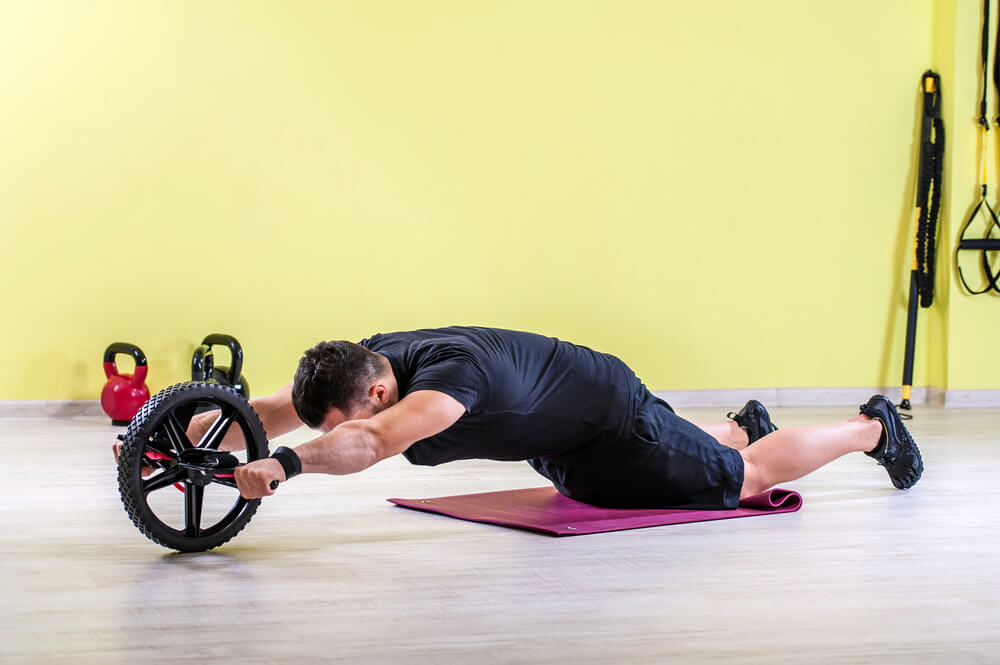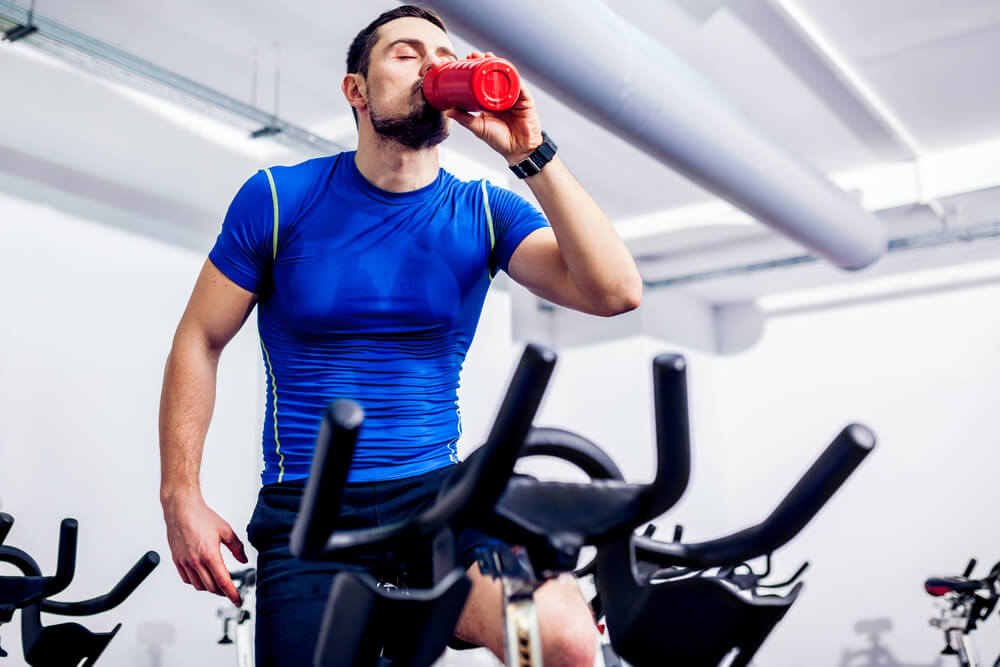
Slow or fast? Long or short? Is HIIT the best type of training? Here’s everything that you need to know to make sure you’re training smart every time.
Cardio. It seems to be one of the most controversial subjects spoken about in any gym. There’s just something about it.
You either love cardio, taking to it like a duck to water, or you don’t. Many people believe that they know how to lose fat and gain muscle, and cardio is really not necessary. They feel that any form of cardio and HIIT is a complete waste of time and energy.
Others think the opposite is true. They feel that it’s an essential part of the how to lose fat and gain muscle process.
There is, however, one undisputable truth: No matter how much muscle the body can hang on to, no one will ever see it if the body fat isn’t stripped away to show off a lean physique. Granted, cardio can be a dull activity.
How dull?
There’s the boredom of the stationary bike, the burning bounce of the StairMaster or the repetitive pounding of the treadmill. Pick your poison. Whichever option you choose; 30 to 45 minutes can seem like a lifetime!
Can muscle and cardio fitness mix?
It’s true that you can’t maximize cardiovascular condition and muscle mass or strength simultaneously. But, you can blend both beginner weight training, how to build muscle mass, and cardio, to burn fat effectively with the right approach.
Now you can plod through grueling cardio workouts and hate every minute of it. You could also freshen it up and make it fun and effective with the one purpose: How to get lean and burn body fat.
There Are Many Cardio Perks
Burning body fat is one effect. With that said, there are many health benefits of cardio and HIIT that can’t be ignored.
What are they?
It increases metabolic rates, which burns body fat. Cardio improves cholesterol levels. It boosts growth hormone secretion. Cardio also increases blood flow to the brain, increasing alertness.
You can expect improved digestion. As well, it reduces stress levels. If that weren’t enough, it also boosts immune system resistance.
If you’re 20 years old and planning to live forever, these health benefits might not be of interest to you.
The benefits are clear. But there’s still the question of which way is best.
Is it the increasingly popular high-intensity interval training (HIIT)?
Or, is it the more traditional long duration, low-intensity training?
Looking At HIIT
First, let’s look at HIIT. This form of training is no secret and has now been practiced for years. The main reason many people, including myself, love this is because it works!
Research shows a marked increase in calories and fat burned after a short (15 to 20 minute) HIIT session as compared to an hour of low-intensity cardio.
The next question is, if this is so much better, why waste time with the low-intensity form or anything else?
The fact is it’s hard to take this intensity every day. And, it’s so intense it might start to wear away your muscles over time. You’ll notice that this HIIT style is very effective when you have a limited amount of time, especially when your schedule requires that you do cardio right after a weight-training workout.
Most think of HIIT and equate it with running. The truth is that running is a great option, but by no means the only way to do HIIT.
There are many methods of putting it to good effect. Sprint intervals are very effective and intense. On an intensity scale of 1 to 10, the sprint interval portion of the interval training is a 10. Sprint intervals can vary in time and distance.
For instance, a runner may sprint a 100-yard interval with a short jog and then another 100-yard interval, several times around a track. The sprint intervals can be as short as 15 seconds.
The rest intervals of sprints are generally short in length. The idea is not to stop exercising. Simply exercise at a lower intensity than the sprint.
Cycling Intervals Are Effective With HIIT
Cycling intervals are also great. Interval training is especially useful for this type of indoor cycling or spinning classes. The intervals simulate various obstacles a cyclist may encounter on the road.
A great example of this is three sets of 40-second sprint intervals with a 20-second recovery period in between each set. You could also cycle for five minutes in the saddle, five minutes in the hover position and five minutes out of the saddle in a standing climb. Then repeat the intervals.
Tabatas are commonly used in cycling classes. These are short intervals of no more than four minutes in length. They consist of 20-second sprints with 10 seconds of recovery and eight reps.
Interval training keeps the spinning participants from getting bored and allows them to increase their intensity for the next set.
There Are Benefits To Heart Rate Interval Training
Heart rate interval training helps you measure how effective your workout is by tracking your maximum heart rate. Since interval training involves varying the intensity of exercise, the heart rate will also vary.
In this type of training, you wear a heart rate monitor and track your heart rate throughout the exercise.
To learn your maximal heart rate, take the number 220 and subtract your age. Then subtract that number by your resting heart rate.
This is best measured just before you get out of bed in the morning. This number should be the upper range of your maximal heart rate.
When you’re doing the sprint interval or HIIT portion of the exercise, your heart rate will be in this maximal range. As you recover, your heart rate will drop significantly.
The goal of heart rate training is to make sure your high-intensity intervals are allowing you to reach your maximal heart rate.
What About Slower-Paced, Longer Cardio?
This is often done for 30 to 60 minutes as the body takes some time to switch over to fat being used as the preferred fuel source. If you’re training in a gym, you don’t have to use the same machine for the entire time.
Often, doing the cardio across several different machines will challenge the body in different ways. It can increase the amount of calories being burned.
Unlike HIIT, which requires explosive intervals followed by a relaxed state of recovery, this option involves working at a moderate heart rate zone for a longer length of time.
This means more calories will be burned during a session of this than HIIT when compared to time alone.
If you’re a beginner, this is physically and mentally easier than HIIT. Combine this with weight training and healthy nutrition, and your endurance will increase over time. You should realize that although long duration cardio is less efficient than HIIT, it does burn fat.
While body fat might not go reduce as fast, it will still drop. And, from my experience, since long duration cardio is easier, you’re less likely to skip workouts or quit.
I’d recommend long duration cardio if you have little endurance. Don’t forget, cardio without super strength training and healthy nutrition is useless and a waste of time. Keep it to moderate intensity.
Do it at 60 to 70% of your max heart rate (which is 220 – your age). Three times for 45 minutes is ideal. Start with 15 minutes. Add one minute each workout until you can do it 45 minutes.
Many people enjoy the elliptical trainer the most, but anything works. You could use the rower, stationary bike or do outdoor runs. Just keep it fresh and remember proper running form.
Nutrition Is Key
There are a few points on pre-training nutrition to keep in mind. HIIT training will completely deplete your body of its stored fuel so pre-training nutrition is vital if performance is the ultimate goal.
If the desire is purely on how to reduce body fat, exercising in a fasted state would be a far better idea. Whichever way you choose, for most people, it’s uncomfortable to exercise on a full stomach. Be sure the food has time to digest.
Carbs are the main source of fuel for interval training. During exercise, it’s important to consume enough fluids.
For most interval training, it’s unnecessary to refuel during exercise since it’s usually so short. But, it can be good to rehydrate throughout the exercise. That’s especially true for lengthy bouts of interval training such as in a spinning class.
As for post training, it’s crucial to replace any fluids lost after HIIT. The general rule is to drink 20 to 24 ounces of water for every pound lost due to sweating. Combining carbs with protein in the two hours after interval training nearly doubles the glycogen storage in the body. The optimal ratio is four carbs to each one of protein.
An example of this type of refueling would be a whole grain bagel with two tablespoons of peanut butter. Restoring your glycogen will provide your body with enough fuel to allow you to interval train again the next day at the same or higher intensity.
So it’s clear to see that both forms of cardio have their benefits and downfalls. Either way you choose, there are some ways that you can introduce some freshness and energy to your cardio training.
Here Are Four Top Factors to Think About…
#1 Set A Goal
Just as it is for your resistance program, you should establish some kind of goal. No matter how simple it is a goal will help. It connects your cardio routine with a purpose.
If you just go through the motions of cardio, it’s going to be a painful and marginally rewarding activity at best. In addition to the physical perks you receive, cardio has the added benefit of a challenge.
It’s good to have some measurable objective to push yourself and improve. This is key to both enjoyment and adherence. Sadly, many overlook this.
#2 Pick Your Exercises
When it comes to picking the best exercises for you, it’s vital that you select what works for you.
What does that mean?
It means picking what’s right for your schedule and your life. I believe what’s best is relative.
Science shows us there are optimal exercises for burning fat, for burning calories and for maximizing VO2Max. There are optimal cars for driving. A Porsche would qualify. But, if you’ve got a family of four, the Porsche is not optimal no matter how good it looks!
It also comes down to what you can do and what you will do. Always remember to select what works best in your busy life and for your own goals.
When picking a cardio exercise, a good tip is to look at it from these three ways: Its capacity to burn body fat, its effect on cardio conditioning (improving the VO2Max) and whether it will keep you engaged.
#3 Set Your Schedule
Research supports early morning cardio (before eating anything) for maximal fat utilization. It works. But, it’s also true that there isn’t always time to train in the morning.
#4 Train In Your Target Heart Rate Zones
It’s easier to find intensity levels when weight training than when doing cardio. That’s why it’s wise to train with a heart-rate monitor. It’s one of the best tools for monitoring your training.
Each workout, you can put yourself in a fat burning state or you can push harder and improve your VO2Max, hence your cardio conditioning. Most cardio programs include both.
Conclusion
In addition to healthy nutrition, regular resistance and cardio exercise will have a huge impact on the quality of your life. Regular cardio training may not be something that comes naturally. That doesn’t matter.
Why?
There are ways to make it work in your life. As for which is best? It depends. The best is the way that works for you.
-By Keith Cormican, RD
Latest posts by Terry M (see all)
- Garage Gyms - Aug 1, 2018
- Kettlebells – Why They Should Be Added To Your Routine. - Jul 24, 2018
- Weight Belts: What Are They Really For? - May 31, 2018















[…] are two types of cardio that most people tend to do. They are called Low-Intensity Steady Rate (LISS) and High-Intensity Interval Training […]
[…] Training,” if you’ve spent time at the gym before you’ve probably heard people talk about HIIT in the past. The basic principle is you perform a move as hard as you can for a short period of […]
[…] is also a high-intensity interval training (HIIT) move, which elevates your heart rate, allows it to slow during the rest, and then brings it […]
I’ve found HIIT to be effective when mixed in with other workout techniques — for me, some short-to-mid range running up to 3.5 miles and strength training is highly beneficial.
Yes I totally agree that HIIT works though when I tried this before, I didnt see that this workout is for me. Its just too fast paced and I like lighter workouts. I do recommend this also for those who needs to build strength and muscles fast.
[…] you know that you can also use a rowing machine to perform high-intensity interval training (HIIT) exercises? Yes! You can incorporate not only aerobic but also anaerobic exercises to your […]
[…] you know that you can also use a rowing machine to perform high-intensity interval training (HIIT) exercises? Yes! You can incorporate not only aerobic but also anaerobic exercises to your […]
[…] Before we go further, however, something needs to be said: There’s nothing inherently wrong with high-intensity interval training (HIIT), cardio-heavy workouts or high-repetition exercises. They increase body mobility, promote […]